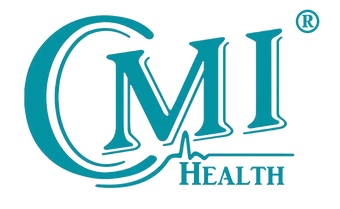How Oxygen Levels Impact Healing | CMI Health

Oxygen is a crucial component in sustaining your body’s optimal level of functioning. It is a key constituent in cellular function and tissue regeneration, making it foundational to the healing process. People often overlook its major role in benefiting bodily healing mechanisms after an injury or illness. Read on for an in-depth look at how oxygen levels impact healing and why maintaining your respiratory health is especially key during these times.
(See how a continuous use pulse oximeter can aid in monitoring respiratory function here).
Cellular Function
Oxygen (O2) is a key moderator in wound healing as it is required for various processes including the promotion of cellular functionality and production (Castilla et al, 2012). Without oxygen, cells will experience hypoxia, a condition in which the cell loses functionality due to lack of oxygen. Cells will also lack the ability to produce energy, as oxygen is required for energy production. Though having low oxygen levels will not necessarily result in hypoxia, it will result in slowed cellular response mechanisms. This means the healing process will occur at a far slower rate than it would if it had adequate concentrations of O2. Since cellular function is necessary in every aspect of healing, whether that be a wound or illness, it is vital that oxygen levels be monitored and supplemented if necessary.
Bacterial and Viral Regulation
When you first sustain an illness or injury, especially a flesh wound, you are exposed to millions of bacteria that can grow and result in an infection. In such situations, the body’s innate and adaptive immune systems spring into action, aggressively maintaining bacterial and viral defense protocol. This immune response is regulated by white blood cells such as macrophages, neutrophils (PMNs), T and B cells, etc. Low levels of oxygen can slow or even inhibit the ability of these cells to defend your bodily tissues. Without the adaptive immune system in full swing, our bodies would lack the ability to create adequate antibodies which play a major role in defending us from dangerous bacterial and viral intruders.
Please note, these immune responses are also required to defend our bodies from pathogens which are inhaled, such as the Influenza Virus (the Flu) or even SARs-CoV-2 (COVID-19). Low oxygen levels can impact a person’s ability to heal and rebound from such illnesses, leaving them susceptible to a more serious infection.
New Vessel and Skin Creation
Additionally, normal oxygen levels are required for your body to regenerate new blood vessels and skin to replace what you have lost. During the healing phase known as angiogenesis, oxygen energizes the nearby cells to facilitate the growth of collagen—the material responsible for creating durable skin. Over time, this allows the body to generate a fresh layer of skin to cover the wound while bridging the gap between any broken blood vessels.
At CMI Health Inc., we understand the importance of monitoring your oxygen levels. This is why we seek to provide you with reliable, rechargeable pulse oximeters to use in your own home.
By keeping these medical devices nearby, you can track your overall respiratory health and ensure your body can respond properly to injury.
Click here to browse our entire collection of pulse oximeters and health monitoring devices.
Sources:
Castilla, D. M., Liu, Z. J., & Velazquez, O. C. (2012). Oxygen: Implications for Wound Healing. Advances in wound care, 1(6), 225–230. https://doi.org/10.1089/wound.2011.0319



































Leave a comment